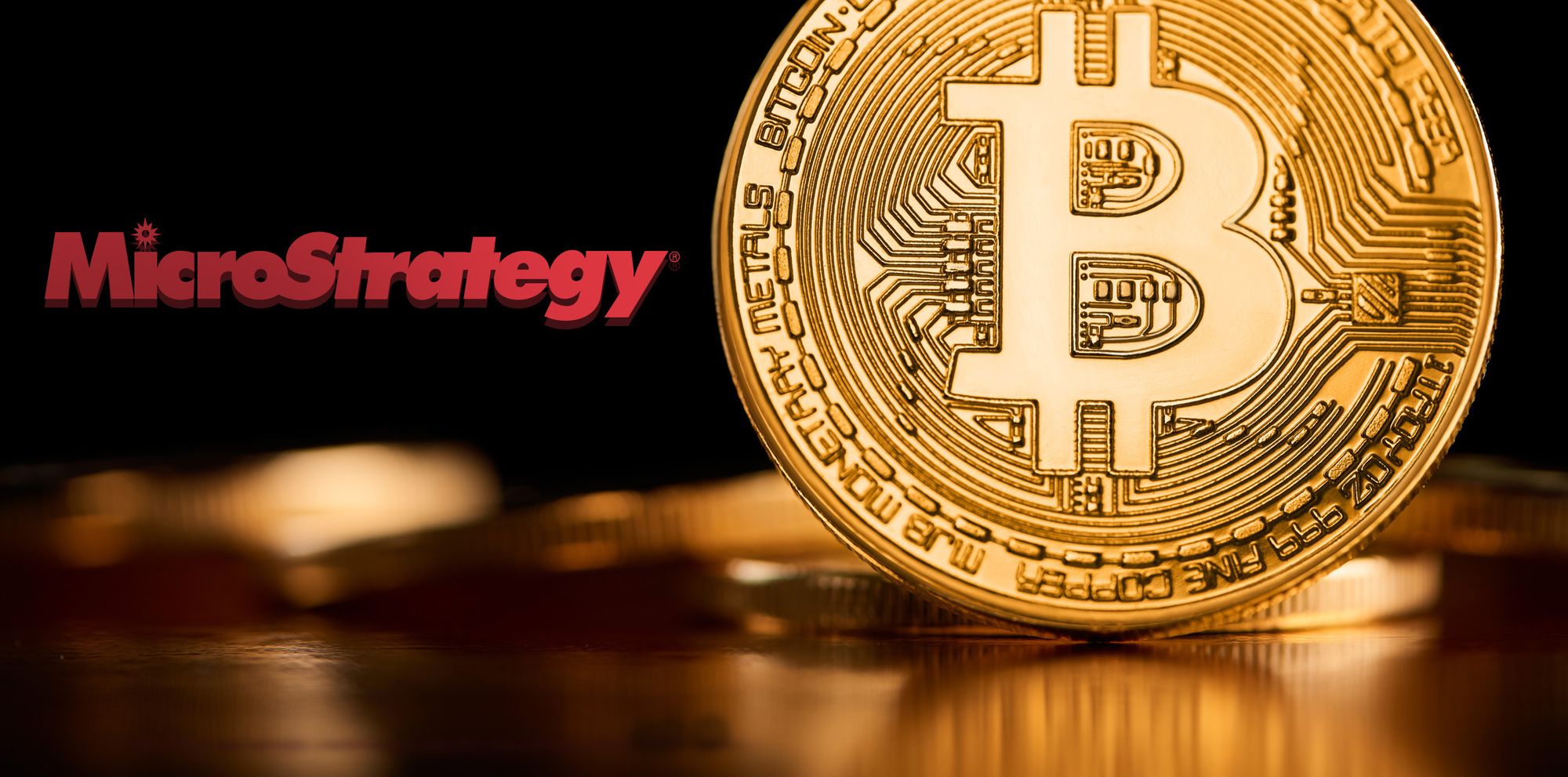MicroStrategy’s Bold Bitcoin Strategy Powers 1,620% Stock Surge
16.10.2024 16:00 1 min. read Alexander Zdravkov
MicroStrategy has emerged as a top performer in the S&P 500, largely driven by its aggressive Bitcoin investment strategy.
The company’s stock has soared 1,620% since it began using Bitcoin as its primary reserve asset in August 2020, far outpacing the gains of both the cryptocurrency itself and prominent tech stocks like Nvidia.
The firm’s dramatic rise traces back to CEO Michael Saylor’s bold decision to shift significant cash reserves into Bitcoin. Today, MicroStrategy owns 252,220 BTC, worth over $15 billion, making up about 1.2% of the total supply.
Saylor’s approach of using a mix of debt and equity to fund these purchases has helped the company expand its holdings while the market sees potential value in owning MSTR shares over Bitcoin directly.
Despite these gains, concerns remain. The close correlation between MicroStrategy’s stock and Bitcoin’s price means any downturn in the cryptocurrency could significantly impact the company’s valuation. However, developments like the rise of Bitcoin ETFs and growing institutional interest in the digital asset may help cushion potential risks.
As Bitcoin recently traded around $67,058, MicroStrategy’s bold approach has cemented its place among market leaders. Still, the high stakes tied to a volatile asset make this strategy a double-edged sword for investors, offering both potential rewards and significant risks.
-
1
Are We Witnessing the Final Bitcoin Cycle as We Know It?
07.06.2025 16:00 2 min. read -
2
Institutions Now Hold Nearly a Third of Bitcoin – Here’s What That Means for the Market
12.06.2025 15:00 1 min. read -
3
Bitcoin at Risk of Deeper Pullback as Momentum Stalls, Analyst Says
07.06.2025 12:00 1 min. read -
4
UK Gold Miner Ditches the Precious Metal for Bitcoin, Shares Jump 40%
06.06.2025 14:00 1 min. read -
5
Strategy Aims for $1B Raise with New Stride Shares to Fuel Bitcoin Buys
07.06.2025 8:00 2 min. read
Bitcoin Surpasses Alphabet (Google) to Become 6th Most Valuable Asset Globally
Bitcoin has officially overtaken Alphabet (Google’s parent company) in global asset rankings, becoming the sixth most valuable asset in the world, according to the latest real-time market data.
Is Bitcoin a Missed Opportunity? This Billionaire Begins to Wonder
Philippe Laffont, the billionaire behind Coatue Management, is beginning to question his stance on Bitcoin.
Robert Kiyosaki Says Crypto Is Key to Building Wealth in a Failing System
Personal finance author Robert Kiyosaki is urging investors to rethink their approach to money as digital assets reshape the economic landscape.
SoFi Returns to Crypto with Trading, Staking, and Blockchain Transfers
Digital banking platform SoFi Technologies is making a strong return to the cryptocurrency space, relaunching its crypto trading and blockchain services after stepping away from the sector in late 2023.
-
1
Are We Witnessing the Final Bitcoin Cycle as We Know It?
07.06.2025 16:00 2 min. read -
2
Institutions Now Hold Nearly a Third of Bitcoin – Here’s What That Means for the Market
12.06.2025 15:00 1 min. read -
3
Bitcoin at Risk of Deeper Pullback as Momentum Stalls, Analyst Says
07.06.2025 12:00 1 min. read -
4
UK Gold Miner Ditches the Precious Metal for Bitcoin, Shares Jump 40%
06.06.2025 14:00 1 min. read -
5
Strategy Aims for $1B Raise with New Stride Shares to Fuel Bitcoin Buys
07.06.2025 8:00 2 min. read


